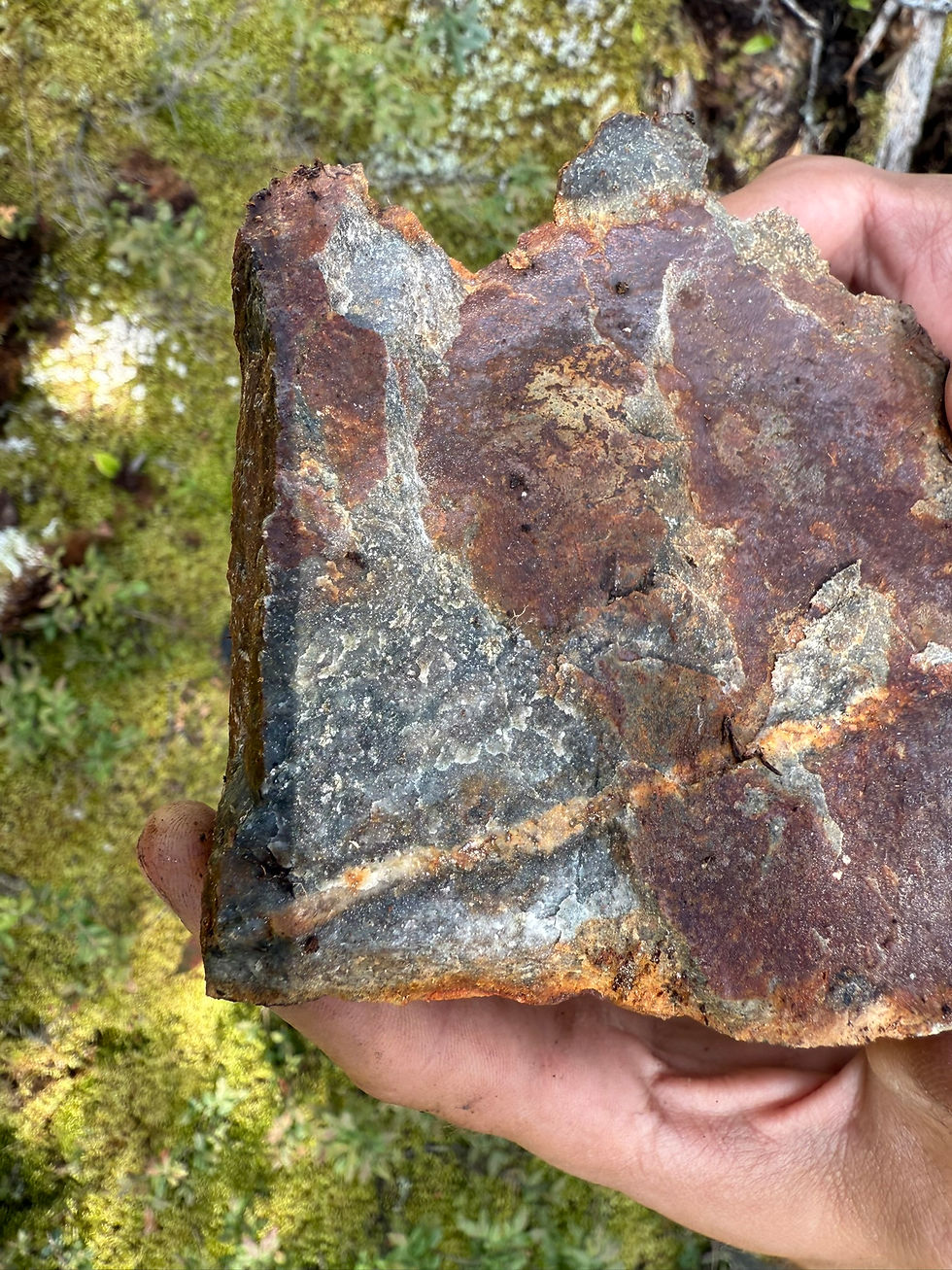CHF’s Byte-sized Review – November 14, 2023
- John A
- Nov 14, 2023
- 3 min read
Updated: Jul 31, 2024
As I was reading the most recent news released by Sokoman Minerals Corp. (TSXV: SIC) (OTCQB: SICNF) I began to consider just what assay results can tell us. Gold deposits are notoriously difficult to sample, especially with drill holes. The amount of gold is very small compared with the amount of rock. There is also the natural variability of the gold distribution, the bits of gold are all differently sized and it is not evenly spread out. Gold particles may be sporadically distributed with some clustered or attached to other minerals in the rock matrix.
Consider the common units, 1 gram per tonne (g/t) is one part per million. That is like one minute in two years but randomly spread out. A sample with one troy ounce of gold per short ton contains 34 parts per million of gold, or 34 grams per metric ton, or 0.0034 percent, rarely if ever, spread evenly throughout the ore.
A piece of gold the size of a Canadian one-dollar coin (loonie) will weigh about 13 grams but broken up and distributed into a tonne of rock you would never see it. Yet that 13 g/t would be easily mineable, at a good profit. A piece of gold the size of a Canadian nickel (five-cent piece) would weigh about 8 grams, and if distributed into a tonne of rock would be the long-term average grade of the Timmins’ mining camp where close to 40 million ounces of gold have been mined, and they are not finished.
Historic vein-hosted gold mines in the Ontario and Quebec gold camps demonstrated that up to 80% of drill intersections in areas that were ultimately mined contained no or very low gold values. High-grade intervals and Visible Gold (VG) occurrences were considered to be erratic or “serendipity” (fortunate discoveries).
What truly makes a gold deposit is not just the presence of gold, it’s about a whole lot of good geology. Drilling is for geology more than grade, it’s about rocks, alteration, structure, accessory minerals, and continuity. It is important to verify the presence of a strong and widespread mineralizing system and become confident that it persists and is real. This is especially true when drilling in new discovery areas. Sokoman appears to be on the right path.
Those who only report “high-grade” and “VG” intervals are likely more interested in “mining the market” than making a mine. And mines are made!
By: Stephen Mlot, P.Eng.
Mining Analyst and
Technical Writer
CHF Capital Markets
An investor in mining companies for more than 40 years, with a preference for gold, Stephen has more than 45 years Mineral Industry experience, including 25 years of Management and Board service with junior mining companies. He is experienced in the full life cycle of Mining projects, from grass roots exploration, through resource building, financial evaluation, construction, and development, mine operations and closure. He is a Qualified Person for NI 43-101 reporting and is skilled at gold mining project valuations at all stages.
Disclaimer
CHF Capital Markets has prepared this blog for general information purposes only. This document should not be considered a solicitation to buy or sell securities in the companies discussed herein. The information provided has been derived from sources believed to be reliable, but cannot be guaranteed. This blog does not take into account the recipients’ investment criteria, financial condition, or financial goals of individual recipients and other issues such as jurisdictional issues and/or legal restrictions that may exist for certain persons. Recipients should rely on their own due diligence and take their own professional advice before investing.
Compensation for this article came from our monthly fees. CHF Capital Markets Inc. and partners Ottavio Cavalcanti and Cathy Hume own shares of SIC.
-01.png)







Comments